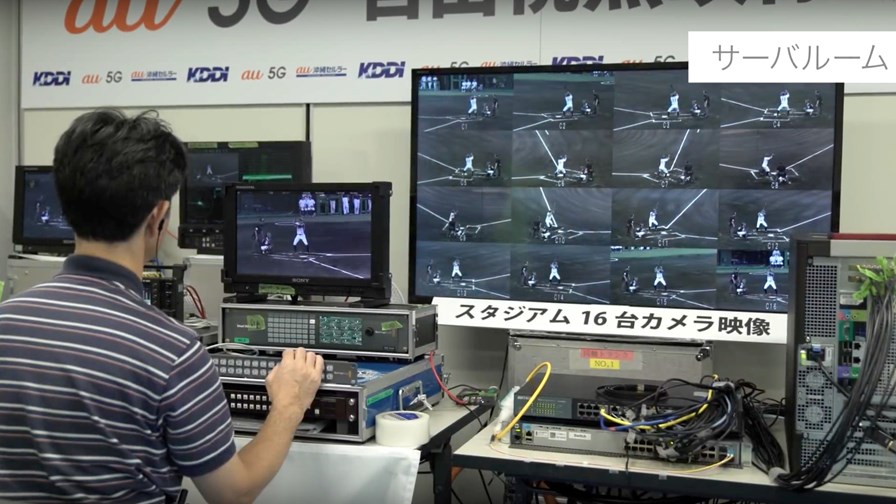
© KDDI from video
- KDDI and Samsung complete live 5G real-time free-viewpoint video test
- The solution enables viewers to control their vantage point from multiple angles
- Test carried out at a baseball game with KDDI Research equipment
- China Mobile and Huawei show VR broadcasting over a 5G network slice
In two separate announcements, Asian telcos KDDI of Japan and China Mobile have presented results from their respective 5G tests of broadcast services. KDDI has showcased real-time “Free-Viewpoint” video over 5G, while China Mobile has demonstrated VR broadcasting on a 5G network slice. Those broadcasters that have been underwhelmed at what LTE could do for them should sit up and take note – if they are looking to stem the Netflix/Amazon OTT tide then 5G may be the technology that will underpin new business models.
KDDI has led a test for real-time, free-viewpoint video streaming using 5G-supporting devices. The test was conducted during a professional baseball game held in the Okinawa Stadium in Naha with Samsung, KDDI Research, Okinawa Cellular and the Advanced Telecommunications Research Institute International. It used Samsung’s 5G end-to-end solution comprised of virtualized core, virtualized RAN, 5G access units and 10 sets of 5G tablet devices. A total of 16 cameras were used to shoot the baseball hitter from different angles and produce free-viewpoint video in real-time for transmission to the 5G tablets.
“KDDI has been continuously working toward developing a wide range of new 5G use cases that can elevate the everyday lives of our users,” said Yoshiaki Uchida, EVP at KDDI. “Together with Samsung, KDDI will continue to explore ways to provide unprecedented experiences by integrating communications and life design.”
Free-viewpoint video is a technology developed by KDDI Research that enables users to view a video from any viewpoint by reconstructing a 3D model for objects (e.g. players) and background objects (e.g. the stadium field). It’s not the first example of such technology, and others are actively developing their own solutions, but the transmission over a 5G network elevates this to becoming a viable use case. There’s a good promotional video from KDDI below, which reveals a little more detail.
Separately, China Mobile has collaborated with Huawei and others to carry out research and verification on network slicing for VR broadcasting, which they say is an industry first. The test was conducted at this week’s MWC Shanghai exhibition in China. The test service incorporated Huawei's 5G core network and base stations, a VR broadcasting solution provided by Let in VR, and Huawei's VR2 terminal.
The cloud-based core network uses a service based architecture to modularize network functions and integrates a lightweight slice manager to provide lifecycle management, such as slice design, online purchase, real-time provisioning, and self-service monitoring. The VR broadcasting solution features real-time colour tuning, rendering optimization, compression encoding and compatibility with multiple playback terminals to achieve VR 4K broadcasting with ultra-low latency. Finally, Huawei’s VR2 terminal features a 3K resolution and a 90Hz refresh rate, making it compliant with high-resolution IMAX standards.
Email Newsletters
Sign up to receive TelecomTV's top news and videos, plus exclusive subscriber-only content direct to your inbox.




